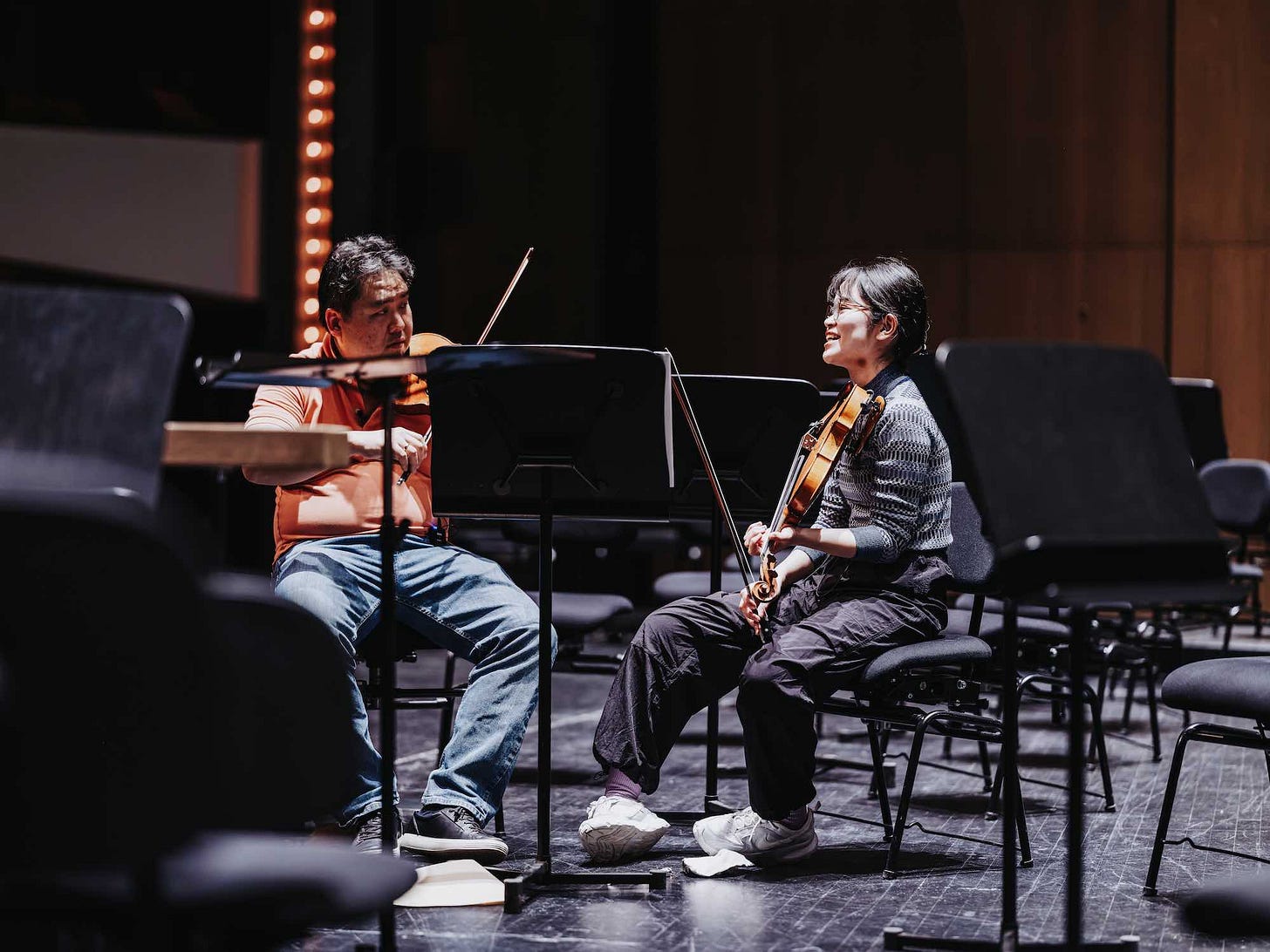
Wolfgang Amadeus Mozart’s Symphony No. 31 in D isn’t on many lists of his greatest works. He wrote it in 1788 when he was 22, visiting Paris with his mother on a job hunt that would not end well. He designed the piece to be crowd-pleasing. It begins by pounding four times on the tonic note, the most satisfying sound in a scale, and it doesn’t get much subtler after that.
But it’s characteristic Mozart: the way it develops its themes, the play of long and short notes, the bright surface and myriad details, could only be his work. For a quarter of a millennium, orchestra players have needed to know how to play stuff like this. So for the National Arts Centre Orchestra’s purposes on Friday morning, it was just what the doctor ordered.
Alexander Shelley, the Ottawa-based orchestra’s music director, waved his conductor’s baton to stop the musicians in mid-stream. He addressed the woodwinds and brass sitting at the back of the orchestra, behind the string players. They were holding notes longer than the strings when everyone played the same phrase, he told them. It’s “one of the things that you could pick up on more quickly —without it necessarily being said from me,” he said mildly. It would help, he added, if they “use a visual cue, please, from Yosuke.”
Yosuke Kawasaki is the NAC Orchestra’s concertmaster, the lead violinist who sits at the conductor’s left hand. A concertmaster’s playing sets the stylistic tone for every other player in the orchestra. At least it does if they keep an eye on him.
Normally Shelley would not have to remind anyone to notice the orchestra’s lead player. But this is an unusual month at the NAC, the 55-year-old Ottawa performing-arts campus with a superb resident orchestra.
The orchestra’s annual Mentorship Program is underway. It’s a three-week rehearsal and performance lab for accomplished young musicians who are just starting their orchestral careers. This is the program’s third year. Each spring the orchestra briefly doubles in size, as each veteran player is matched with a young visitor looking for tips on how to navigate the complicated transition from school to a career in music.
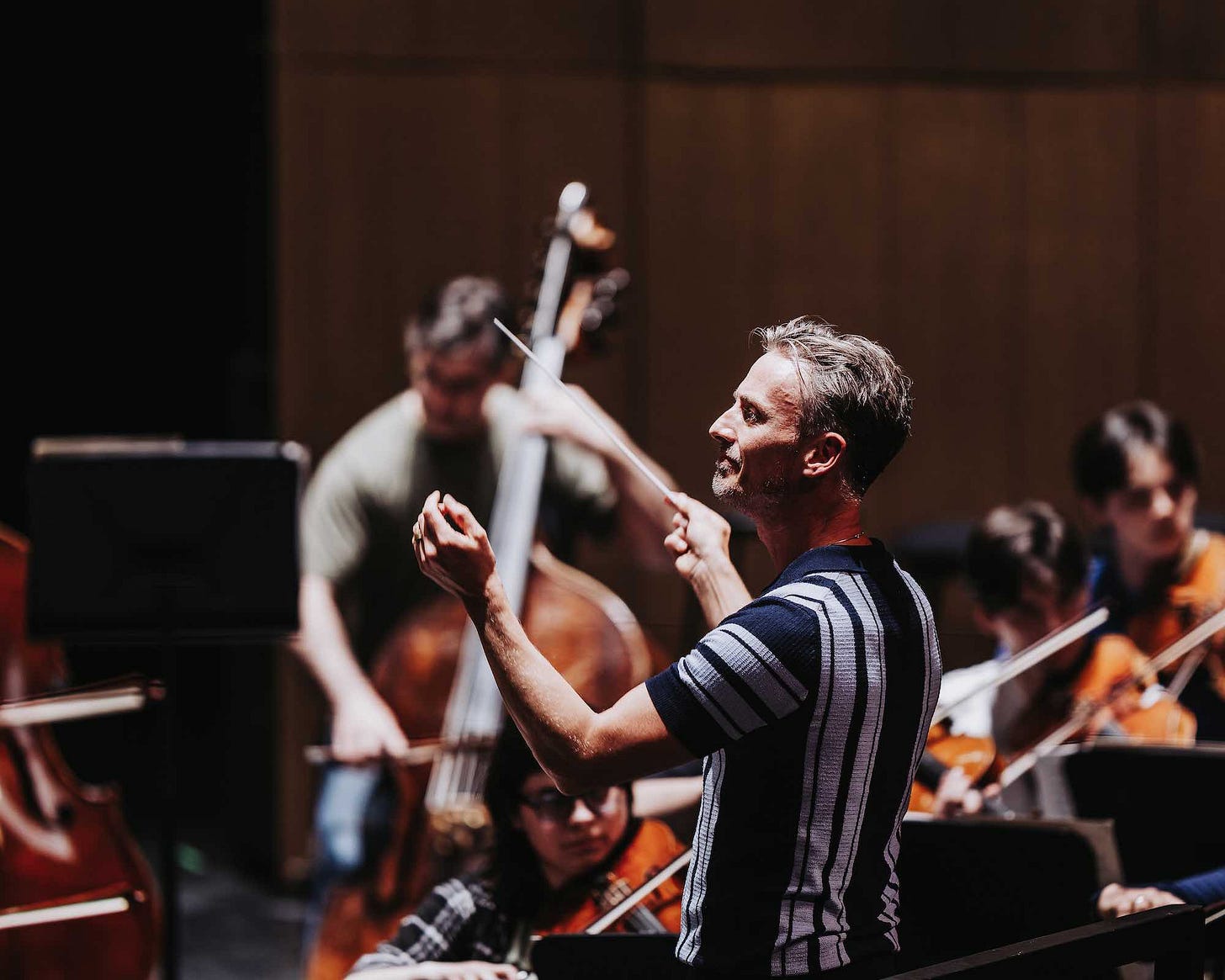
“There’s no real substitute for being on the ice with professionals,” Shelley told me after the Friday rehearsal during a brief interview. (I was impressed: Shelley is an upper-class Brit who spent most of his career in Germany before he became the NAC Orchestra’s music director in 2015, but he’s since become fluent in hockey metaphors.)
“There’s a tricky gap between finishing your studies and sitting in a professional orchestra. You’re expected to know a lot of things that you actually end up learning on the fly in the job. And this is supposed to fill that out.”
As a bonus, the mentorship program also fills the orchestra out. The NAC Orchestra is smaller than a lot of first-tier orchestras, often fielding 60 musicians or fewer. This has its charms, but it puts a lot of big late-19th-century and 20th-century repertoire out of reach. But lately, reinforced by the young mentees, the orchestra has been playing two big programs each spring. A Mahler symphony in 2022. Strauss and Holst last year. This week the beefed-up orchestra will perform Ravel’s music for his ballet Daphnis et Chloé. Next week, another Mahler symphony.
The Mahler week is sold out. A few tickets are available only for this week’s program. The orchestra’s audience is starting to realize it’s a good idea to come out while the mentorship program is underway.
The mentorship program’s first week is a kind of boot camp. The orchestra rehearses a bewildering amount of standard repertoire in closed sessions, for rehearsal’s sake, without performing any of it in concert. For Friday’s sessions the musicians prepared parts of works by Mozart, Mendelssohn, Rimsky-Korsakov, Brahms, Tchaikovsky and Beethoven. The plan was to cover all of it in a two-and-a-half-hour rehearsal with a single short break.
I wanted to see and hear how the lore is passed down. I asked NAC staff for a seat onstage, surrounded by the orchestra. A chair was procured for me, behind the second violins, with clarinets and flutes to my left, harps to my right, percussion behind. This was my view:
I’ve watched a few conductors rehearse orchestras over the years. Shelley is always impressive in this setting. Orchestra rehearsals are always on the clock. There is never enough time. A conductor needs to keep everyone in a decent mood, reach a shared understanding of how best to serve the composer’s intent, and nail down dozens of details, pages apart, in pieces that will sometimes last an hour in performance. You have to be tremendously efficient.
In a clever promotional video the NAC produced last month in which Shelley critiques movie conductors (Kate Blanchett in Tár, Bradley Cooper in Maestro), he offers some rehearsal philosophy. “When you’re in front of an orchestra of 100 people, these are all absolute experts in their particular field. When you stop them, you have to say something that is really productive, really specific and really clear, and is going to add value to the whole experience. And that, frankly — above and beyond knowing how to control an orchestra with your hands — is the most daunting prospect.”
He’s really good at it. Over the past decade I’ve learned more about how to run an office meeting from watching Shelley rehearse than I did in any office. It’s no surprise that the mentorship program includes two early-career conductors who watch Shelley and sometimes take the podium under his counsel: Soo Jin Chung from Vancouver by way of Juilliard, and Armand Birk from Victoria via Tanglewood.
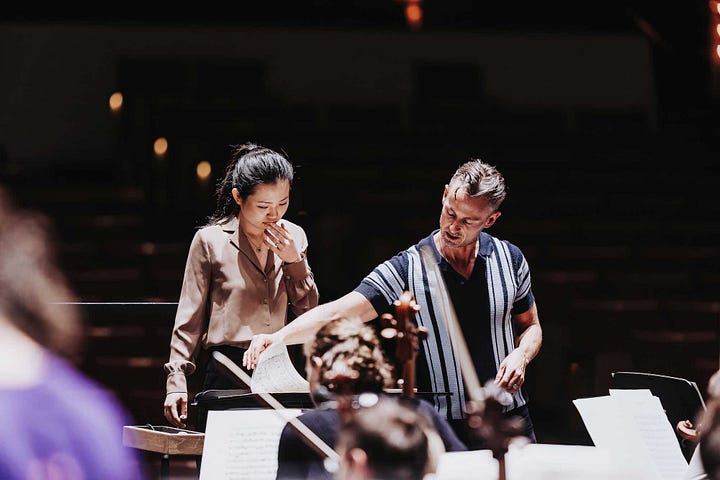
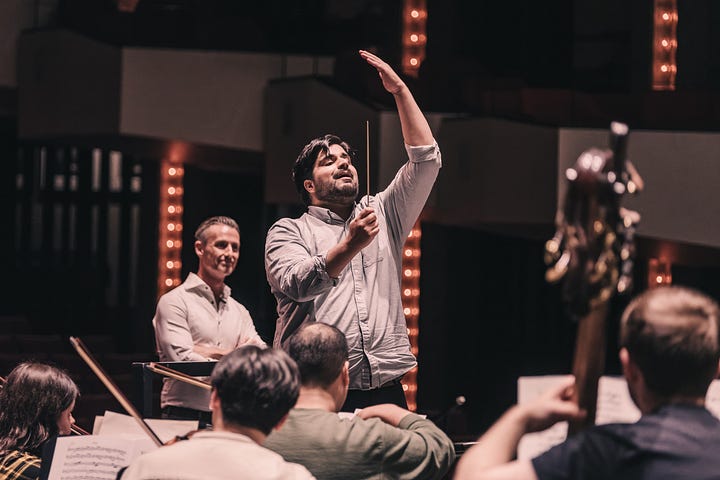
They both showed real skill. Shelley simply pushes far more information out than they do, with hands, shoulders, a raised eyebrow, a smile or grimace. At one point during the Mozart he pointed at the French horns, then at his eyes, in a universal I-need-you-watching gesture. Not sure they got it, he waved to them with his left hand before their next entry, all while keeping time with his right.
“Great. Thank You!” Shelley said at the end of the first run-through. “Okay, working back…” He flipped pages in his score, looking for spots to fix or tighten.
Immediately, Kawasaki, the concertmaster, turned around and told the first violins: “Play more at the end.” He paused to consider. “A little more. At F.” Leah Roseman, who was working for the day as principal second violin (and who has become a prolific podcaster on music and creativity), turned to give similar counsel to her section. Throughout the string section, veteran NAC Orchestra musicians interpreted and elaborated on the advice for the young mentees sitting next to them.
The productive chatter calmed as Shelley started working on short sections. To the strings, about a burst of short notes rising to a held note: “The challenge, I think in this phrase, is to have the rhythmic precision — but then to let the second measure blossom.” He sang what he had in mind. To the brass and winds, urging them to accent every fourth note in a passage that was already loud: “It’s going to feel ridiculous to you, but then” — he gestured over his shoulder to where an imaginary audience would have been listening — “it'll cut.”
At the rehearsal’s half-hour mark, Shelley tucked away his Mozart score and the musicians started working on the Scherzo from Mendelssohn’s music for A Midsummer Night’s Dream. Lighthearted uptempo chase music, written a half-century after the Mozart. Sections of the orchestra that didn’t get to lead anything in the earlier piece now did: the distinctive bitter mid-register violas, then the flutes. At one point the clarinets came in, all over the place, like porridge. Sean Rice, the orchestra’s excellent second clarinetist, chuckled, knowing Shelley would come back to tighten the phrase up. He did.
At the break, I chatted with some of the NAC Orchestra musicians. Many were a little on edge. They love the chance to meet new young colleagues. I’ve rarely met a good musician who doesn’t teach in some capacity and take it seriously. But this mentorship program isn’t a lark for the experienced pros.
They have to prepare scads of music for these packed rehearsals, then more music they don’t often perform for the concert weeks. And the presence of the mentees, who aren’t privy to the stylistic conventions any orchestra adopts through long years together, means absolutely nothing comes as easily as it usually does. “If we were playing this stuff in a concert tonight, and we sounded like this, I would not be happy,” one of the string players told me.
It’s not a hassle. The mood around the NAC always brightens when the young guest musicians are in town. But it’s work. “It's really like working a different muscle for us NACO musicians,” flute player Stephanie Morin told me later. “We really have to listen and try to think: ‘Okay, what is it that's making this feel differently than when we do it together [in a normal week, without the mentees]? And what advice can I give this person, in like a one-minute space of time, that's gonna maybe create a light-bulb moment?”
Friday morning’s rehearsal would see the orchestra, mentors and mentees, work on a couple more pieces. The Legend of the Kalendar Prince, from a suite of music Nikolai Rimsky-Korsakov wrote that was inspired by the Thousand and One Nights, was composed a full century after the Mozart. Here, at first, the orchestra all but disappears: melody and atmosphere are carried by a succession of soloists in tag-team fashion. Violin, then bassoon, then oboe, each backed by a harp, before the orchestra finally enters. Later, cello, more oboe, flute, French horn, all playing melodies inspired by the Middle East. Each of the solo parts was played by a young mentee, while the more experienced player in the next chair listened closely.
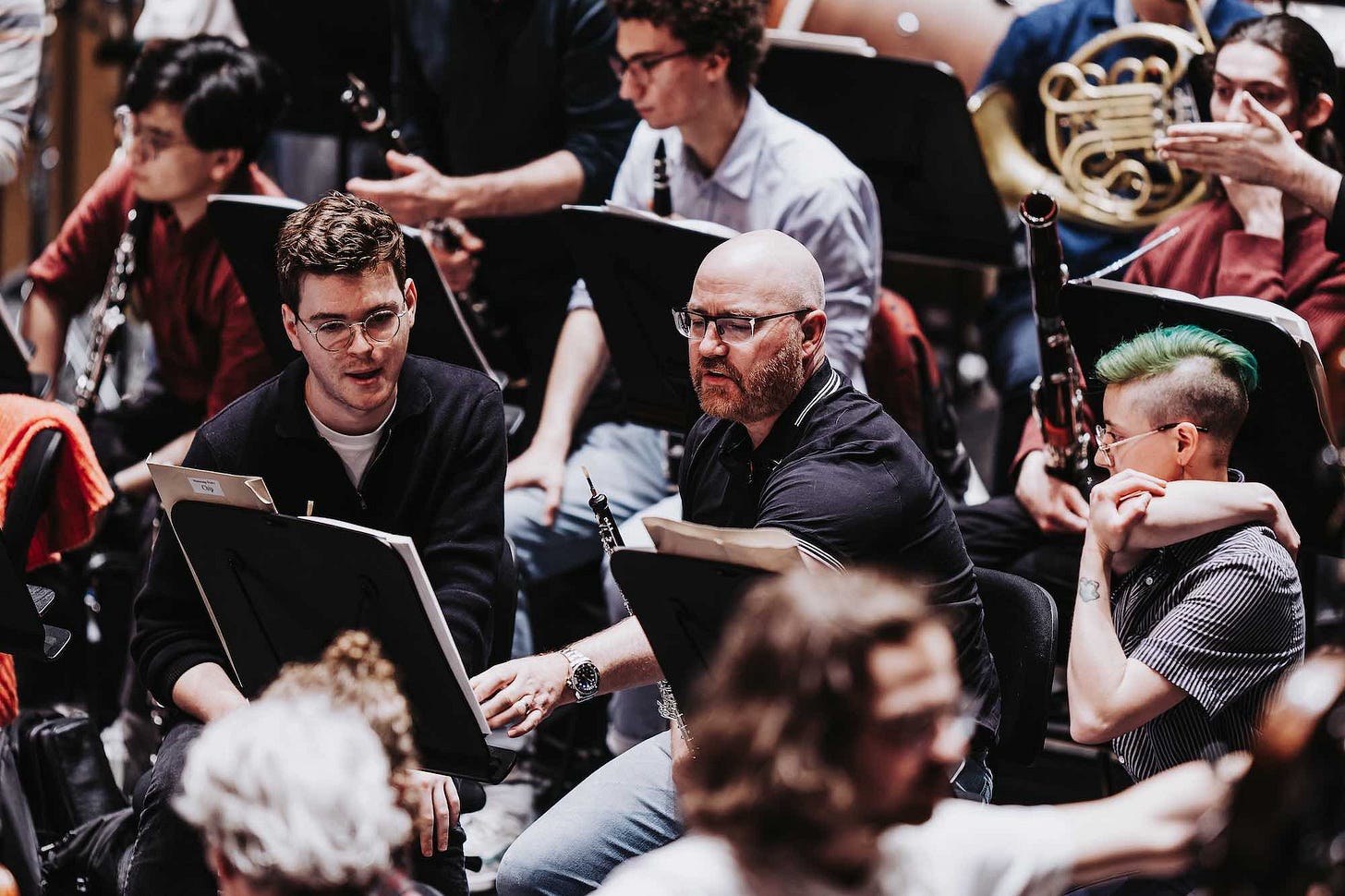
In concert, it’ll be a mix of NACO pros and visiting mentees in the solo roles. “The orchestra knows that those concerts are about us attaining the highest artistic level, the level we would expect of ourselves if there were no mentees,” Shelley told me later. “So that's where we set the bar. We don't say, ‘Oh yeah, it's okay if it doesn't sound great.’ That's not what we're doing at all… These are proper concerts. We’re live-streaming them. The stakes are as high as they can be in music.” He caught himself and made a self-deprecating of-course-it’s-just-music recovery — “You know, what’s going to happen if something goes wrong?” — but the stakes any good musician feels before a concert are high indeed.
Shelley’s original four-year contract as the leader of this orchestra’s fortunes was extended twice, to 2023 and then to 2026. At that point he’ll have been music director for 11 years, the second-longest tenure in the orchestra’s history. There’s been no announcement about what will happen then.
One thing he’ll have done, in part through this mentorship program, is to help spread word through the industry about this very fine orchestra with an awkward name in an out-of-the-way corner of the classical-music world. Three times now, dozens of promising musicians have visited Ottawa long enough to learn from their NACO peers. They’ll take the news about everything they heard and learned with them when they go home. That’s by design.
“This is an extraordinary orchestra,” Shelley told me when I had finished spending the morning pretending to be part of it. “I wish, still, that it was more widely known internationally. We've been working really hard to try and do that. And we're making progress. But, you know…
“I’m a deep believer in the fact that the only kind of happiness and fulfillment that anybody's ever going to have is in the integrity of their own decisions about the world. So, you know, whether you're famous or not, whether the orchestra is really well-known or not, ultimately is noise. The true satisfaction comes in the integrity of our work.”
The National Arts Centre Orchestra, augmented by guest participants in the orchestra’s Mentorship Program, will perform this Wednesday and Thursday, and next Wednesday and Thursday, at the National Arts Centre in Ottawa. Tickets remain for only this week’s concerts.




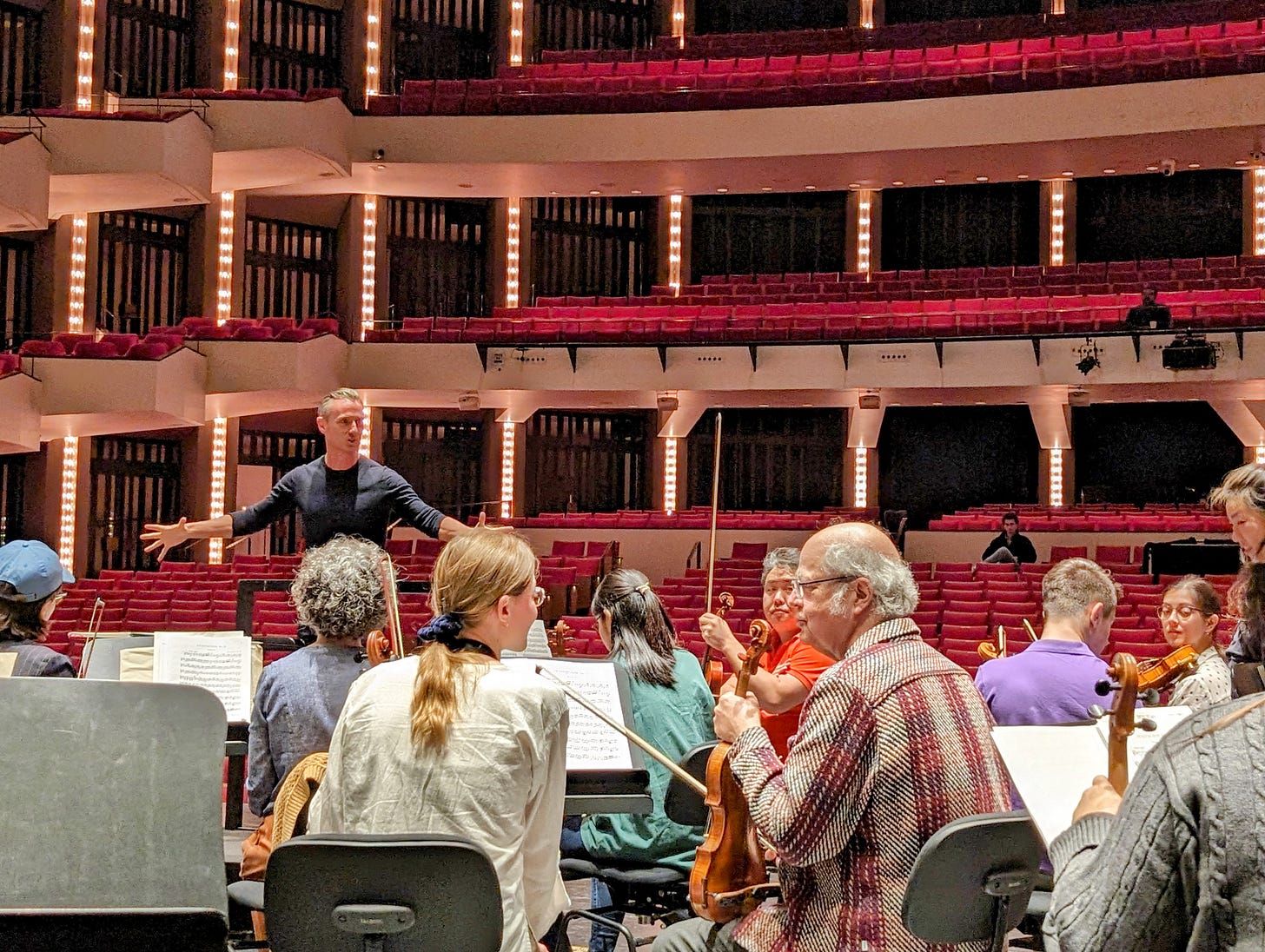
We love this story! Anytime we can welcome
you to Vancouver, we have many stories
we think you might find fascinating!
A good read Paul. Lessons on how we can conduct ourselves in other settings.